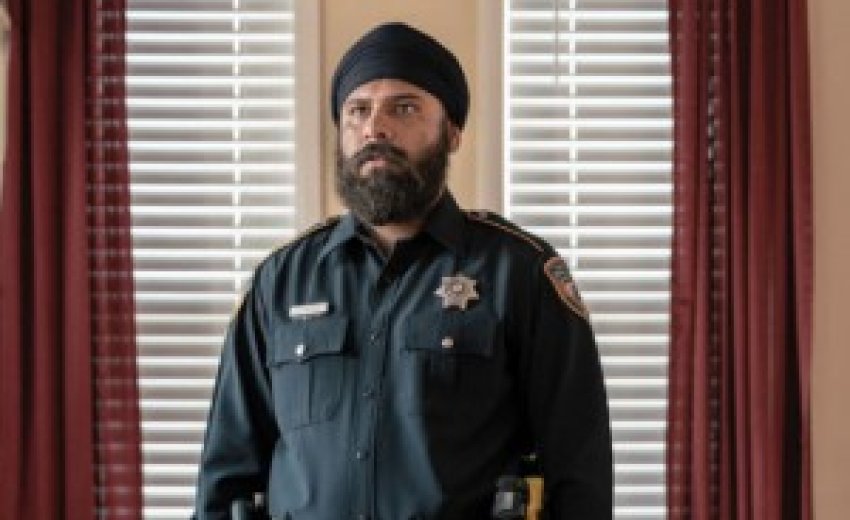A uniform change at the Harris County Sheriff’s Office is fostering a new sort of interfaith dialog
 |
| Image: Max BurkhalterNavdeep Nijjar |
3/1/2016: NAVDEEP NIJJAR WAS 14 when he moved to Houston from India. Two years later, he was riding in a Honda Accord with a friend’s family in Jersey Village when the other boy’s mother, distracted by the commotion in the backseat, swerved and slammed into a car parked on the side of the street.
Nijjar, now 29, remembers the crash vividly, because it was the first experience he’d had with a police officer in the U.S. “Instead of yelling and screaming at us for it being our fault, he just helped us out—asked us if we were all right,” he says today. “That inspired me a lot.” From that point on, Nijjar knew what he wanted to do with his life: join Houston’s finest. There was just one problem. Nijjar is a Sikh.
Sikhism, which originated in 15th-century India, emphasizes tenets including: the equality of all humans, the rejection of discrimination on the basis of gender, creed or caste, the importance of charitable works and acts of service, and the outward display of a Sikh’s articles of faith, which must be worn at all times.
For men, this means wearing hair uncut, under a turban, and growing out their beards, as well as carrying a short dagger, or kirpan, at the hip. This can be a problem for Sikhs wishing to join law enforcement, as many U.S. police forces have strict grooming codes that require officers to keep their hair short and faces closely shaven.
In Houston, the Sikh community hasn’t always had a great relationship with police. In 2008, for instance, a Sikh family accused Harris County Sheriff’s Office (HCSO) deputies of harassment after they called the cops to report a burglary. The family said that instead of taking a report on the incident, deputies handcuffed them and pointed tasers at them, and one told them he “knew about Muslims.” (Because of the turbans Sikhs wear, they have often been confused for Muslims, although the two religions are not related.)
After Adrian Garcia’s election to the post of sheriff in 2009, he made outreach to the Sikh community a priority, visiting local gurdwaras—Sikh houses of worship—and educating his deputies about Sikhism, explaining, among other things, that the dagger isn’t used for violence.
Then, two years ago, Nijjar applied for a job with the HCSO, asking that, if hired, he be allowed to wear his beard, turban and dagger. The request resulted, the following year, in now-former Sheriff Garcia signing off on a policy change to allow practicing Sikhs to wear their articles of faith while serving on the force, something the current sheriff has continued to support.
Sandeep Dhaliwal, a Sikh deputy who had been serving on the force for six years at the time without displaying those articles, was the first to benefit from the new policy. Nijjar, meanwhile, completed his training at the sheriff’s academy last November and is now field-training with an officer in northwest Houston, where most of the city’s approximately 5,000 Sikhs live. A third Sikh deputy has come on board, as well.
Nijjar thinks their ranks could swell, as more Sikh kids see people who look like they do serving on the force. He’s currently advising an eager Sikh high school student interested in a career in law enforcement.
At a recent Sikh summer camp, Nijjar showed up in his uniform and talked to 100 curious kids about what it’s like to be a cop. “They wanted to know everything. Have I shot anybody? Do I actually carry a real gun or a fake gun? Somebody asked me that,” Nijjar says, smiling. And, to his surprise, they asked him if he was treated differently because he was a Sikh.
“Not even close,” he remembers telling them. “That was not even in the picture for me, from the start. We’re brothers and sisters, so they don’t see me any differently. That’s who I am to them.”
This article appeared in the March 2016 issue of Houstonia.

